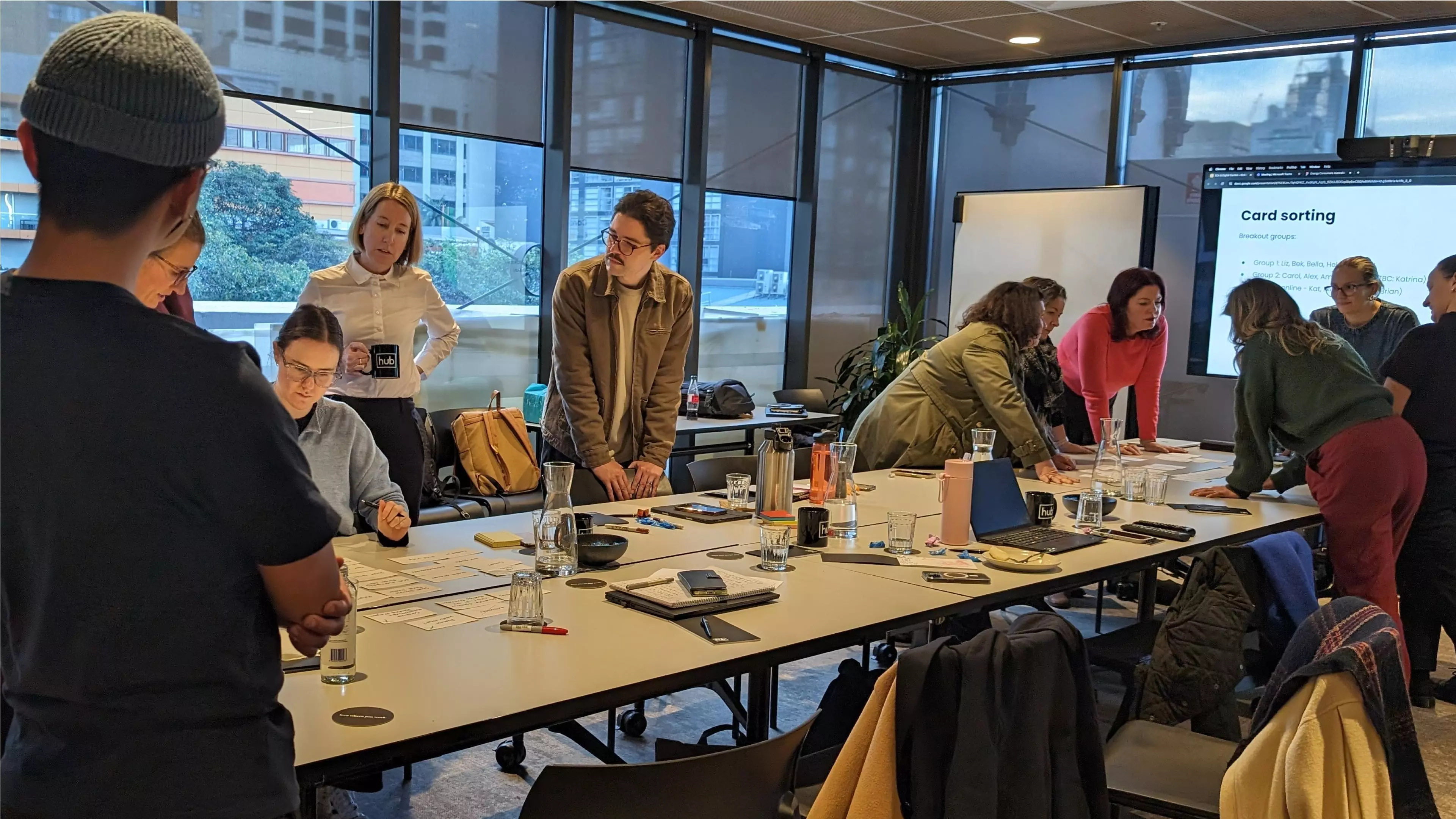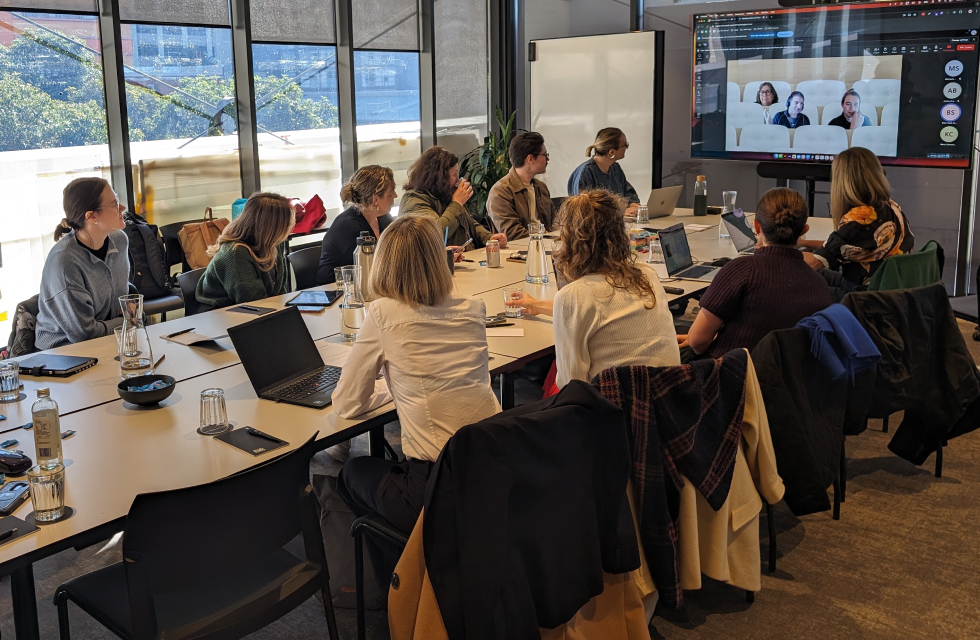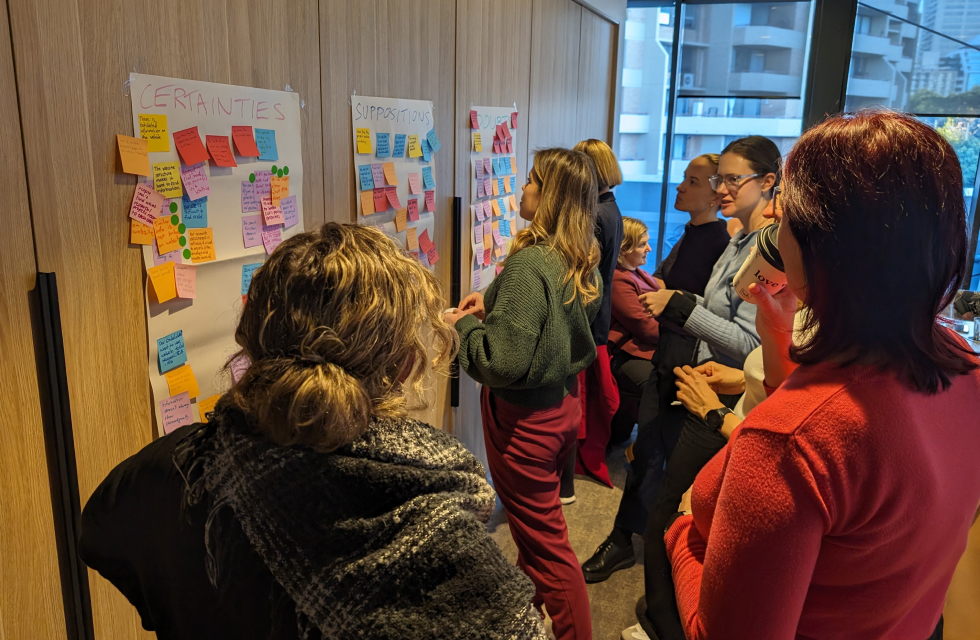Best UX activities to get stakeholders engaged in workshops

There’s a myriad of choices when it comes to UX activities for workshops, so how do you choose the best one? Running an engaging workshop means project stakeholders feel more open to share ideas and concepts, resulting in a more successful project. We find giving our client’s stakeholder group a voice gives them buy-in and results in more genuine and candid discussions.

Here’s some of the UX activities we like to run to have fun, engaging and effective workshops:
Post-up activities
Post-ups are a classic for a reason. A post-up activity involves individuals or groups writing on post-it notes and then posting them up on a wall. This can follow a number of different methodologies, depending on the purpose of the session.
In an in-person workshop, posting on the wall creates a sense of immediacy and tangibility. Tactility is a key part of an engaging workshop as it enhances the participants' connection to the activity. It encourages more active participation and allows for on the fly changes and discussion.
Online, post-up activities are a fairly close mirror of the real thing. What they lack in tactility they make up for in other ways, such as readability (no poor handwriting), record keeping (software tracks who wrote what) and the ability for searching and filtering of the notes that went up.

Some examples of engaging post ups are:
CSD matrix
Participants write and post-up the Certainties, Suppositions and Doubts about the project. This is a great way to framework what is known or unknown about a project and its stakeholders. We like to use CSD matrixes early on in projects, such as in kick-off workshops.
Brainstorming
Brainstorming is an ideation method that can be used to generate a large amount of ideas. We will typically frame ideation brainstorming using “How might we?” questions to generate open ideas and solutions. Participants post-up and then present their top ideas to discuss with the group.
Dot voting
Dot voting is an extension of post-up activities and allows users to place votes (in the form of sticky dots or similar) on ideas or priority areas. It creates consensus and allows for focus and further exploration of top voted ideas.
Sketching
Sketching can take on many forms but is primarily used as an ideation technique. Sketching is a great way to get visual and let creativity flourish. Sketching typically works better in-person, as it can be difficult for participants to quickly or accurately draw using their computer.
Whilst some participants may be worried about their drawing skills, we like to remind everyone that the purpose of sketching is not to be a designer. Even the most abstract sketches tell a story and communicate an idea, which is the whole purpose of the activity.
A classic sketching activity is Crazy 8’s, where participants draw 8 sketches in 8 minutes. The idea is that participants are forced to put down whatever comes to mind, even if it’s not refined. This generates a large amount of ideas that can then be refined in subsequent crazy 8 rounds. Participants get buy-in by presenting their work, and engaging discussions often follow.
There are several other sketching techniques, such as storyboarding, journey mapping and wireframing that can all be used to build engagement in workshops. We like to run workshops with plenty of colourful pens and large sheets of paper that create a fun and creative atmosphere.
Card sorting
Card sorting is used to understand how users categorise and group information in an information architecture. The result of card sorting can be used to inform the modeling of IA and the design of navigation.
In the workshop, individuals or groups are given a card deck that contains a piece of content or page from their website. They then group these cards into logical categories and write new labels to describe their groupings.
This type of work can promote really good discussion in groups and has the same tangible and physical benefits as post-ups. At the conclusion of card sorting, participants can present their sort to the others, allowing for comparison and contrast between solutions. Card sorting can also be run online, using software such as OptimalSort.

Workshops do not have to be dry and boring. Create an agenda that includes engaging activities where participants can interact, discuss and move around the room. Make sure you include breaks to stretch the legs and snacks are never amiss. Whilst many of these activities can be done online, often in-person workshops are more engaging and personable. Online workshops have the advantage of being able to be run remote and can leverage software to create unique digital whiteboards. When evaluating what type of workshop to run, make sure you pick something that is engaging and the right fit for what you're trying to learn.
